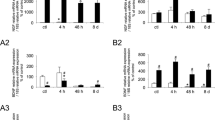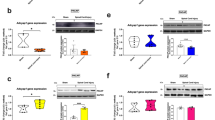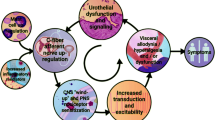Abstract
This article is the fifth of a series aimed at mapping brain activities as they result from the development of cyclophosphamide (CP) cystitis in behaving rats using c-fos and Krox-24 expression. The inactive hepatic metabolites of CP are metabolized in the kidney to produce acrolein, which generates cystitis. Data come from animals which were injected once i.p. with either 1 ml saline (sham) or 100 mg/kg CP in 1 ml saline under transient volatile anesthesia and which behaved freely for 1–4 h postinjection, 4 h being the minimum time for cystitis to completely develop. Survival times longer than 4 h were not studied owing to ethical considerations. The first 2 h postinjection cover a period of time over which inputs of multifactorial origin (stress and pain due to the intraperitoneal injection process, possible effects due to the presence of hepatic CP metabolites in blood, cystitis onset) interact in an indistinguishable way; the last 2 h are more cystitis specific as the other effects have vanished. Complete screening of telencephalic levels has been performed. These data complete previously published data at both spinal and subtelencephalic levels. Of all the telencephalic structures, only the bed nucleus of the stria terminalis in the dorsal part of its lateral division (BSTLd) and, to a lesser degree, the nucleus centralis of the amygdala, mostly in its caudal portion (cCeA), appeared to be significantly driven over the most specific cystitis period. Both of these structures had related, but not identical patterns of expression. They both reacted shortly after CP injection, but, while cCeA maintained its activity throughout cystitis development, BSTLd showed a rebound, reaching a peak value when cystitis was fully developed. Both of these areas are the only telencephalic areas to contain high PACAP38 immunoreactivity. This is evidence that, (1) both the BSTLd and cCeA could be the most rostral areas that visceronociceptive inflow would reach when cystitis genesis is under way, and (2) PACAP38 could be one of the neurochemical agents involved in telencephalic visceronociceptive processing. From our complete mapping of brain activities under a fully developed cystitis situation (4 h postinjection), it appears that the activities in BSTLd and cCeA are concomittant with those of both the dorsal vagal complex (DVC), paratrigeminal nucleus (PaT), and the ventrocaudal bulbar reticular formation (vcBRF) at brainstem levels, suggesting they all form the main part of the neural network that subserves the central processing of cystitis-related inputs, comprising pain and associated pseudoaffective responses. Both the DVC and BSTLd, which are the most powerfully driven areas, would be particularly important in such a way. The origin of these activities should be found in both vagal (as sensed through PaT activity) and spinal (pelvic) influences. This network profoundly differs from those reported for painful situations, either somatic or visceral, which controversally accompany positive cardiac inotropism.
Similar content being viewed by others
Author information
Authors and Affiliations
Additional information
Received: 13 November 1997 / Accepted: 21 April 1998
Rights and permissions
About this article
Cite this article
Bon, K., Lantéri-Minet, M., Michiels, J. et al. Cyclophosphamide cystitis as a model of visceral pain in rats: a c-fos and Krox-24 study at telencephalic levels, with a note on pituitary adenylate cyclase activating polypeptide (PACAP). Exp Brain Res 122, 165–174 (1998). https://doi.org/10.1007/s002210050504
Issue Date:
DOI: https://doi.org/10.1007/s002210050504




